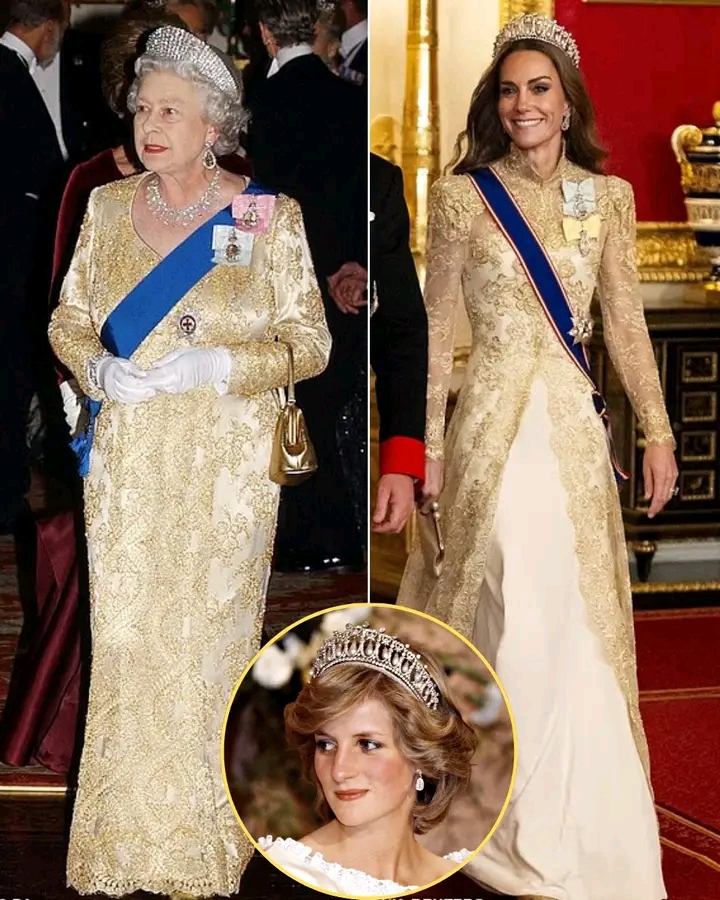NEWS
A Royal Tribute in Gold: The Princess of Wales Channels the Legacy of Queen Elizabeth II

A Royal Tribute in Gold: The Princess of Wales Channels the Legacy of Queen Elizabeth II
Since returning from her summer break, Catherine, Princess of Wales, has undergone a noticeable sartorial transformation — one that signals not just a change in wardrobe, but a deepening sense of her future role within the monarchy.
Her appearance at the recent State Banquet marked a defining moment. Dressed in a breathtaking gold lace gown by British designer Phillipa Lepley, the Princess delivered what many commentators have dubbed a “mic-drop” fashion moment. The gown, layered in intricate gold Chantilly lace over a white base, closely echoed one of the late Queen Elizabeth II’s most iconic ensembles — worn during the 2003 State Banquet for U.S. President George W. Bush.
Observers were quick to note the deliberate nod to the Queen’s legacy — a sartorial tribute that transcended mere fashion. In choosing this ensemble, the Princess of Wales appeared to symbolically weave together two powerful legacies: that of Queen Elizabeth II, defined by decades of unwavering duty, and that of Diana, Princess of Wales, remembered for her empathy and defiant grace. The tiara worn that evening was not from the royal vault but was reportedly a treasured piece once owned by Diana herself — a poignant detail rich with emotional resonance.
This homage marks a broader evolution in the Princess’s public image. The vibrant floral prints and casual denim of past engagements have largely been set aside in favor of a more refined, regal aesthetic. From sharply tailored coats in jewel tones to heritage fabrics reminiscent of Queen Elizabeth’s Balmoral wardrobe, Catherine is embracing a style that communicates authority, continuity, and readiness.
During President Trump’s state visit, for instance, she wore a deep burgundy Emilia Wickstead coat and coordinating hat — an ensemble that strongly echoed the Queen’s color-block fashion strategy, designed to ensure visibility and convey symbolism. Similarly, her increasing use of tartan and tweed — classic staples of royal tradition — signal a deliberate alignment with her grandmother-in-law’s enduring style principles.
Yet, Catherine’s reinterpretation of royal style is not a mere replication. Her silhouettes are more contemporary, the tailoring sharper, and the overall presentation undeniably her own. This balance between homage and innovation suggests a modern monarch-in-waiting who understands the power of visual messaging while making it relevant for a new generation.
By aligning herself sartorially with Queen Elizabeth II — and occasionally invoking the memory of Diana — the Princess of Wales is not simply honoring the past. She is subtly but firmly positioning herself as a future Queen: respectful of tradition, yet ready to redefine it on her own terms.












